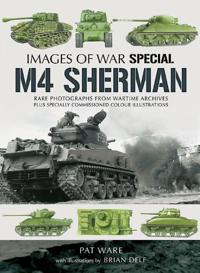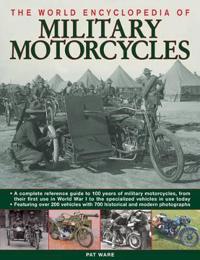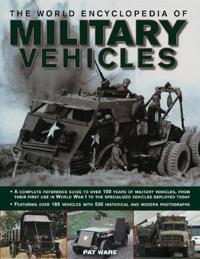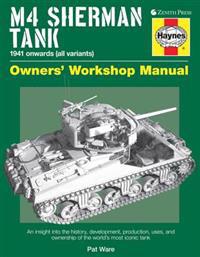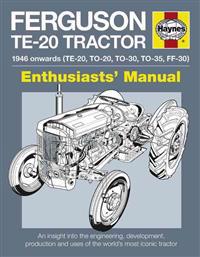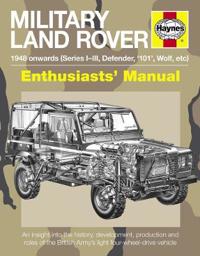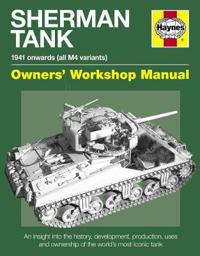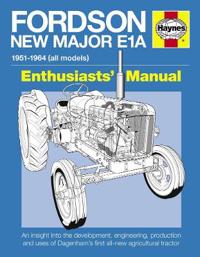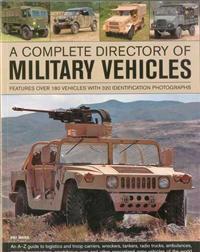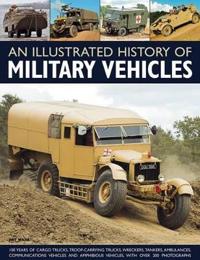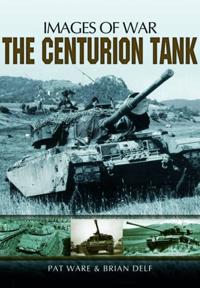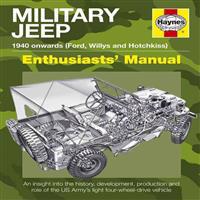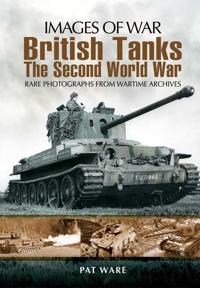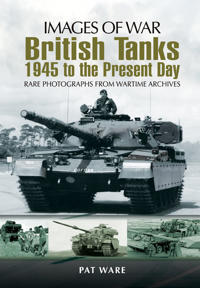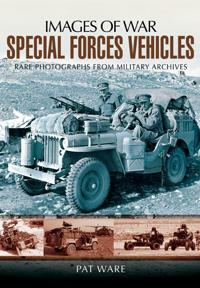M4 Sherman (Pocket)
avPat Ware, Brian (ILT) Delf, Pat Ware
ISBN: 9781781590294 - UTGIVEN: 2014-05The M4 Medium Tank - the Sherman - was one of the most famous tanks of the Second World War. It was produced in greater numbers than any other Allied tank, it fought on every front - in Western Europe, on the Eastern Front, in North Africa, Burma, the Pacific - and it continued to serve effect[...]
The World Encyclopaedia of Military Motorcycles (Inbunden)
avPat Ware
ISBN: 9780754819608 - UTGIVEN: 200909Motorcycles entered military service in World War I, replacing the mounted despatch rider and mechanizing machine-gun and stretcher units. The conflict brought an enormous upsurge in the use of motorcycles in Europe and America. This comprehensive new book covers the lively history of the machines,[...]
The World Encyclopedia of Military Vehicles (Inbunden)
avPat Ware
ISBN: 9780754820529 - UTGIVEN: 2010-09This title tells the story of the development and production of the military vehicle, from the first basic trucks, through the advances made in the inter-war years, to the specialized vehicles in World War II and beyond. It contains an illustrated A-Z catalogue of more than 185 vehicles, including f[...]
M4 Sherman Tank Owners' Workshop Manual: 1941 Onwards (All Variants) (Inbunden)
avPat Ware
ISBN: 9780760342947 - UTGIVEN: 201205The M4 Sherman can be said to be the tank that won World War II. With almost fifty thousand built during the war, it was America's primary armored fighting vehicle during the war. Thousands of these found their way into the inventories of the British Army and Soviet Red Army as well as other allies.[...]
Haynes Ferguson TE-20 Tractor Enthusiasts' Manual (Inbunden)
avPat Ware
ISBN: 9780857330109 - UTGIVEN: 201106The Ferguson TE-20 is the most iconic of tractors - the small unobtrusive grey tractor that many people will recognise. The TE-20 replaced the horse on many farms after WWII, and paved the way for the mechanisation of farming. Over 500,000 examples were built and sold all over the world, with US- an[...]
Haynes Military Land Rover Enthusiasts' Manual (Inbunden)
avPat Ware
ISBN: 9780857330802 - UTGIVEN: 201301Land Rovers have been used by the military since they were introduced, in Series I form, in 1948. The Land Rover's rugged, 'go-anywhere' reputation has led to its use in a vast number of military roles, from general-purpose workhorse to special forces reconnaissance vehicle, ambulance, communication[...]
Sherman Tank Manual (Inbunden)
avPat Ware
ISBN: 9780857331014 - UTGIVEN: 201203The US-designed and built Sherman was the most prolific Allied tank of the Second World War and was operated by the armies of the USA, Canada, Britain, the Soviet Union and France. Ease of production, mechanical reliability and durability in use characterised the Sherman, of which more than 49,000 w[...]
Fordson New Major E1A Enthusiasts' Manual (Inbunden)
avPat Ware
ISBN: 9780857333063 - UTGIVEN: 201307The Fordson Major tractor was produced in large numbers at Ford's UK Dagenham factory from 1951 until 1964, and was exported across the world, including to the USA (where it was called the Ford 5000 diesel). Produced with petrol, diesel and kerosene-burning engines, the E1A was the subject of contin[...]
A Complete Directory of Military Vehicles (Häftad)
avPat Ware
ISBN: 9781780190211 - UTGIVEN: 201202This title features over 180 vehicles with 320 identification photographs. It is an A-Z guide to logistics and troop carriers, wreckers, tankers, radio trucks, ambulances, missile transporters, amphibious cars and other specialized army vehicles of the world. It is an illustrated A-Z directory of mo[...]
An Illustrated History of Military Vehicles (Pocket)
avPat Ware
ISBN: 9781780191935 - UTGIVEN: 201301This title covers 100 years of cargo trucks, troop-carrying trucks, wreckers, tankers, ambulances, communications vehicles and amphibious vehicles, with over 200 photographs. It covers topics ranging from the first basic trucks produced before and during World War I, through the technical advances m[...]
The Centurion Tank (Häftad)
avPat Ware, Brian Delf
ISBN: 9781781590119 - UTGIVEN: 201303Few tank designs have been as effective, versatile and long-lived as that of the British Centurion. Conceived during the Second World War as the answer to the superior German Tiger and Panther tanks and to the lethal 88mm gun, this 52-ton main battle tank incorporated the lessons British designers h[...]
Haynes Military Jeep 1940 Onwards (Willys MB, Ford GPW, and Hotchkiss M201) Enthusiasts' Manual (Inbunden)
avPat Ware
ISBN: 9781844259335 - UTGIVEN: 201101The Jeep was the primary light four-wheel-drive vehicle of the US Army and allies during the Second World War and the post-war period. It was originally designed to meet a 1940 US Army specification, and over 600,000 examples were built in both Ford and Willys forms. The Jeep saw service all over th[...]
British Tanks: The Second World War (Häftad)
avPat Ware
ISBN: 9781848845008 - UTGIVEN: 201111Perhaps the British did not produce the most successful tanks of the Second World War, but they certainly designed an extraordinary range of light, medium and heavy tanks along with many that were adapted for special purposes. This fascinating variety of military machinery is recorded in Pat Ware's [...]
British Tanks (Inbunden)
avPat Ware
ISBN: 9781848845664 - UTGIVEN: 2012-07In this companion volume to British Tanks: The Second World War, Pat Ware provides an expert introduction to the design, production and operation of British tanks since 1945. Fewer types of tank were built than during the wartime period, but the complexity of design and manufacture increased, and a [...]
Special Forces Vehicles (Häftad)
avPat Ware
ISBN: 9781848846425 - UTGIVEN: 201206What is the ideal vehicle for special forces operations, for dangerous missions performed by small units of highly trained troops often working in enemy territory, behind enemy lines? And which vehicles have the world's armies selected, adapted and developed since modern special forces established t[...]

